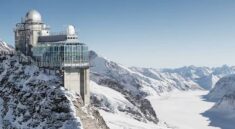Knik, Alaska, located northeast of Anchorage, is a small community with historical significance. It serves as a gateway to the breathtaking Knik Glacier and offers numerous outdoor activities, including hiking, fishing, and glacier tours. The Knik River flows through the area, making it an attractive destination for nature enthusiasts and adventurers exploring Alaska’s rugged wilderness. While Knik is a remote community with limited services, it provides access to the stunning landscapes and backcountry adventures that Alaska is known for.
How to get there
To get to Knik, Alaska, you can follow these general guidelines:
- Fly to Anchorage: Most visitors to Knik arrive by air in Anchorage, which is the largest city in Alaska. Ted Stevens Anchorage International Airport (ANC) is the primary airport serving the region. You can book a flight to Anchorage from various major cities in the United States.
- Rent a Vehicle: Once you arrive at Anchorage, the most common way to reach Knik is by renting a vehicle, such as a car or an SUV, at the airport or from rental agencies in the city. Knik is approximately 40 miles northeast of Anchorage, and driving is the most convenient way to reach the area.
- Drive to Knik: From Anchorage, you can take the Glenn Highway (Alaska Route 1) northeast towards Palmer and Wasilla. Continue on the Glenn Highway until you reach Knik River Road (Alaska Route 563). Turn onto Knik River Road, and it will lead you to the Knik area, including Knik Glacier and Knik Lake.
- Navigation and Maps: It’s advisable to have GPS navigation or maps on hand to help you find your way, as some roads in the area may be less developed and not as well-marked. Cellular reception may also be limited in certain parts, so having offline maps can be helpful.
- Local Tours: If you’re interested in taking a guided tour to explore the Knik Glacier or surrounding wilderness, many tour operators in Anchorage offer specialized tours that include transportation from the city.
Please keep in mind that weather conditions in Alaska can vary significantly depending on the season, so it’s essential to check road conditions, weather forecasts, and any travel advisories before embarking on your journey to Knik. Additionally, ensure that your vehicle is prepared for the conditions you may encounter, especially if you plan to visit during the winter months when snow and ice are common
Things to do
Knik, Alaska, and the surrounding area offer a range of outdoor activities and attractions for visitors who want to immerse themselves in the rugged beauty of the region. Here are some things to do in and around Knik:
- Knik Glacier Tours: Take a guided tour to Knik Glacier, one of the largest glaciers in the region. Tours may include scenic flights, helicopter rides, or guided glacier hikes, allowing you to explore this stunning natural wonder up close.
- Hiking and Backpacking: Enjoy the region’s hiking trails, which offer opportunities for various skill levels. The Knik River Public Use Area features hiking paths along the river and into the surrounding wilderness.
- Fishing: The Knik River and nearby lakes are popular fishing spots for salmon, trout, and other fish species. Consider a fishing excursion or hire a local guide to enhance your experience.
- Boating and Kayaking: Explore the Knik River and nearby lakes by boat or kayak. The scenic waterways provide opportunities for paddling, wildlife viewing, and relaxation.
- Off-Roading: Venture into the backcountry by taking an off-road vehicle or ATV tour. The region has rugged terrain suitable for off-roading adventures.
- Wildlife Viewing: Keep an eye out for local wildlife, including moose, bears, eagles, and various bird species. Wildlife photography is a popular activity in the area.
- Photography: Capture the stunning landscapes, glaciers, and wildlife with your camera. The scenery in and around Knik provides excellent photo opportunities.
- Camping: Enjoy the outdoors by camping at one of the designated campsites in the Knik River Public Use Area. Camping allows you to experience the tranquility of the Alaskan wilderness.
- Scenic Drives: Take leisurely drives along scenic routes like the Glenn Highway, which offers picturesque views of the Chugach Mountains and the Knik Glacier.
- Visit Palmer and Wasilla: These nearby towns offer additional attractions, including the Musk Ox Farm in Palmer and the Iditarod Trail Sled Dog Race Headquarters in Wasilla.
- Winter Activities: In the winter months, Knik offers opportunities for snowmobiling, cross-country skiing, and dog sledding, allowing you to experience the region’s winter wonderland.
- Northern Lights Viewing: If visiting in the winter, Knik offers a chance to witness the Northern Lights (Aurora Borealis) when the night skies are clear.
Before embarking on any outdoor activities, it’s important to check local conditions, weather forecasts, and safety guidelines, especially if you plan to explore the wilderness. Additionally, consider booking tours or activities with local outfitters and guides who can provide expert knowledge and ensure your safety during your adventures in Knik, Alaska.
Things not to forget
When visiting Knik, Alaska, and engaging in outdoor activities in the rugged wilderness of the region, it’s essential to be well-prepared. Here are some things not to forget:
- Weather-Appropriate Clothing: Alaska’s weather can change rapidly, so pack layers of clothing suitable for the season. Don’t forget waterproof and insulated gear for colder months and rain gear for wet weather.
- Footwear: Wear sturdy, waterproof boots suitable for hiking and outdoor activities. Extra socks are essential for longer excursions.
- Maps and Navigation: Carry detailed maps of the area, GPS devices, or navigation apps on your smartphone. Cellular reception can be limited in remote areas.
- Water and Hydration: Bring a reusable water bottle and a way to purify water from natural sources, such as streams or rivers, if needed.
- Backpack: Use a comfortable and durable backpack to carry essentials, snacks, water, and extra clothing during hikes and adventures.
- First-Aid Kit: Pack a basic first-aid kit with items like bandages, antiseptic wipes, pain relievers, and any personal medications.
- Emergency Equipment: Carry essentials like a whistle, fire-starting materials, a multi-tool, and a headlamp or flashlight with extra batteries.
- Insect Repellent: Depending on the season, be prepared for mosquitoes and other insects by bringing insect repellent.
- Bear Safety Gear: If you’re hiking in bear country, carry bear spray and know how to use it. Familiarize yourself with bear safety protocols.
- Food and Snacks: Bring energy-rich snacks and meals for longer outings. Store food securely to avoid attracting wildlife.
- Camping Gear: If camping, don’t forget your tent, sleeping bag, sleeping pad, and camping stove if needed. Follow Leave No Trace principles when camping.
- Cell Phone: Although cell phone reception may be limited, carry your cell phone for emergencies. Consider a portable charger.
- Cash and Identification: Carry cash in small denominations for small purchases, as well as identification, especially if you plan to enter any facilities or need assistance.
- Camera and Binoculars: Capture the stunning landscapes and wildlife with a camera or binoculars. Extra memory cards and batteries can be helpful.
- Trash Bags: Follow responsible outdoor ethics by packing out all trash and litter.
- Permits and Reservations: Check if any permits or reservations are required for camping, tours, or specific activities in the area.
- Local Contact Information: Have contact information for local authorities, emergency services, and tour operators if applicable.
- Respect for Nature: Be respectful of the environment, wildlife, and local regulations. Leave natural and cultural sites as you found them.
- Travel Insurance: Consider travel insurance that covers outdoor activities and potential emergencies.
- Local Knowledge: Seek advice and information from local experts, guides, or park rangers who can provide insights into current conditions and safety recommendations.
Best time to visit
The best time to visit Knik, Alaska, largely depends on your interests and the activities you plan to pursue. Here’s a breakdown of the seasons to help you choose the best time for your visit:
- Summer (June to August):
- Weather: Summer is the warmest and most pleasant season in Knik. Daytime temperatures can range from the 60s to 70s°F (15-25°C), occasionally reaching the 80s°F (27-32°C).
- Activities: Summer is the ideal time for outdoor activities such as hiking, fishing, boating, kayaking, and wildlife viewing. The extended daylight hours provide more time for exploration.
- Fall (September to October):
- Weather: Fall in Knik is characterized by cooler temperatures, with daytime highs in the 50s to 60s°F (10-20°C) and cooler nights.
- Activities: Fall foliage adds to the scenic beauty of the area. It’s an excellent time for hiking, photography, and enjoying the changing colors of the landscape. Fishing can still be good in early fall.
- Winter (November to February):
- Weather: Winter brings cold temperatures and snowfall to the region. Daytime highs can range from the 20s to 30s°F (-6 to 4°C), with colder nights.
- Activities: Winter activities include snowmobiling, cross-country skiing, dog sledding, and, if you’re lucky, witnessing the Northern Lights (Aurora Borealis) on clear nights.
- Spring (March to May):
- Weather: Spring marks the transition from winter to warmer weather. Daytime temperatures gradually rise, with highs in the 30s to 40s°F (2-9°C) early in the season and warming to the 40s and 50s°F (9-15°C) by May.
- Activities: Spring is the start of the fishing season as rivers and lakes thaw. Wildlife becomes more active, making it a good time for wildlife viewing and photography.
What is knik Alaska known for?
Knik, Alaska, is renowned for its stunning natural beauty, with highlights including the majestic Knik Glacier, a wide range of outdoor activities such as hiking and glacier tours, abundant wildlife viewing opportunities, and its historical significance as one of Alaska’s early settlements. The region’s scenic landscapes and adventure tourism options make it a popular destination for nature enthusiasts and adventurers alike.
What does knik mean in Alaska?
The name “Knik” in Alaska is derived from the Dena’ina Athabascan word “Nikh,” which is believed to mean “fire.” Knik is the name of a river, glacier, and community in Alaska, and it is known for its rich natural beauty, particularly the Knik Glacier and the Knik River. The name reflects the indigenous cultural heritage of the region and the significance of the land and waterways in the lives of the native peoples and early settlers.
How do you pronounce knik Alaska?
The pronunciation of “Knik,” the name of a river, glacier, and community in Alaska, is typically like “nik.” It’s pronounced as “nik,” rhyming with the word “thick.” The “k” is silent, so it’s not pronounced as “ka-nik” but rather as a single syllable, “nik.”
How deep is Knik Glacier?
The depth of Knik Glacier in Alaska varies at different points, but it can reach impressive depths. Knik Glacier, like many glaciers, can have ice that is hundreds to thousands of feet deep. In some areas, it may be over 600 feet (approximately 183 meters) deep. Glaciers are dynamic and can change over time due to snow accumulation, ice flow, and melting, so the exact depth can fluctuate.
Image credits: upload.wikimedia.org





